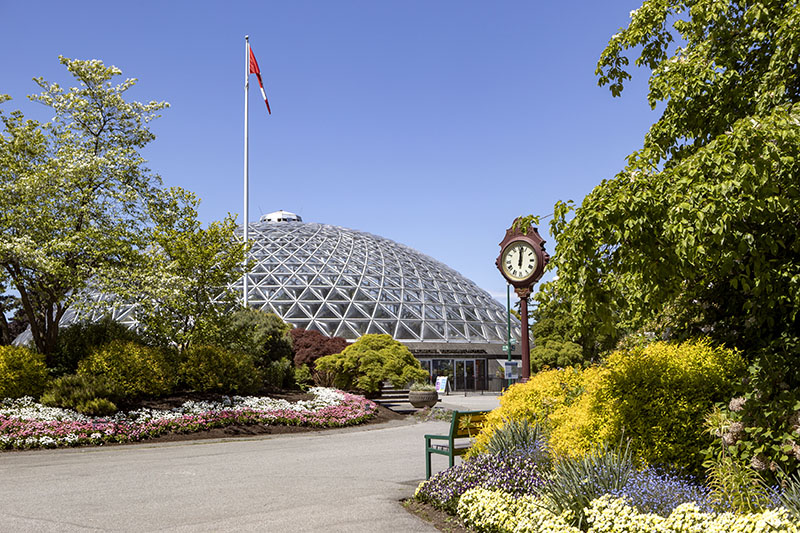Exploring Vancouver's Best Urban Getaways
By David Burke / Images By Joern Rohde
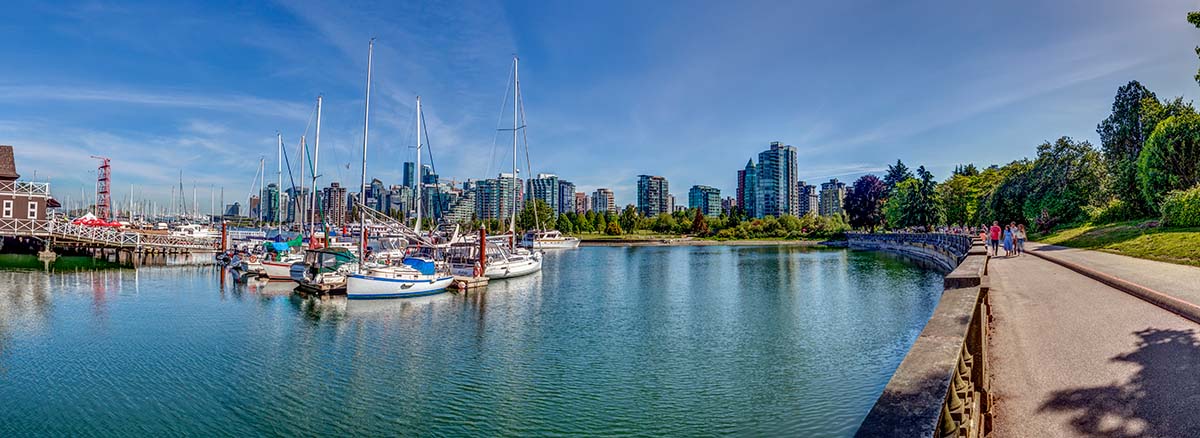
Sn 1889, the year after the creation of Stanley Park, the sixth Governor General of Canada, Lord Fredrick Arthur Stanley, took part in a procession around the just-completed Park Road to Prospect Point along with Mayor David Oppenheimer, who had opened the park the previous year. According to Wikipedia, an observer wrote that Lord Stanley (also of Stanley Cup fame) “threw his arms to the heavens, as though embracing with them the whole 1,000 acres of primeval forest and dedicated it ‘to the use and enjoyment of peoples of all colours, creeds and customs, for all time.’”
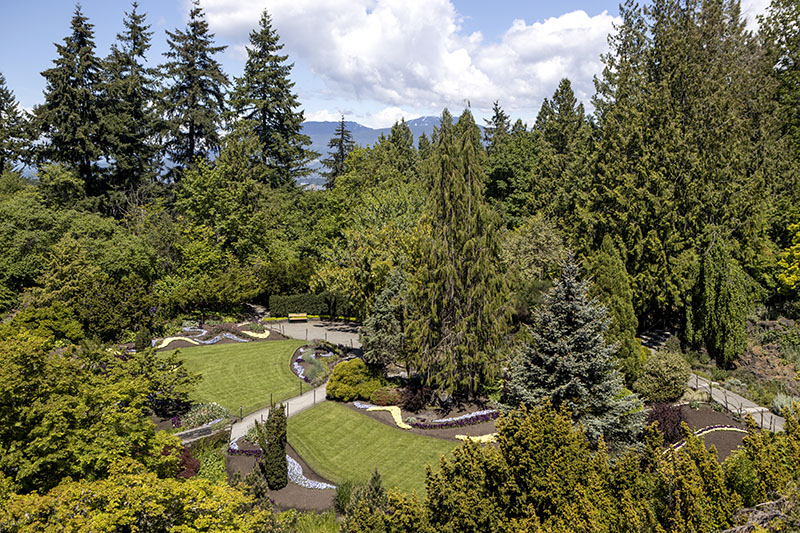
Ironically, that dedication took place a few years after hundreds of First Nations inhabitants, the largest settlement of which was called Xwáýxway, were forcibly removed to make way for its creation. The village was near the current site of the Lumbermen’s Arch. As part of the ongoing process of reconciliation for that and other historic wrongs perpetrated on Aboriginal peoples, a series of totems honouring British Columbia’s First Nations (including the Squamish, Musqueam, and Tsleil-Waututh, on whose traditional territory Vancouver stands) now welcomes visitors near the site of Lord Stanley’s dedication.
In 2013, Stanley Park was named the best park in the world in Trip Advisor’s first Travellers’ Choice Awards, beating out New York’s Central Park. At 405 hectares (1,001 acres), it is the third-largest urban park in North America. Unlike most urban parks, though, its most striking feature is not manmade but natural — the 256 hectares (632 acres) of urban rainforest containing some 27 kilometres of footpaths in addition to the famed 10 km Stanley Park Seawall pathway that rings the park, offering great views of English Bay, the North Shore mountains, Burrard Inlet and the city skyline.
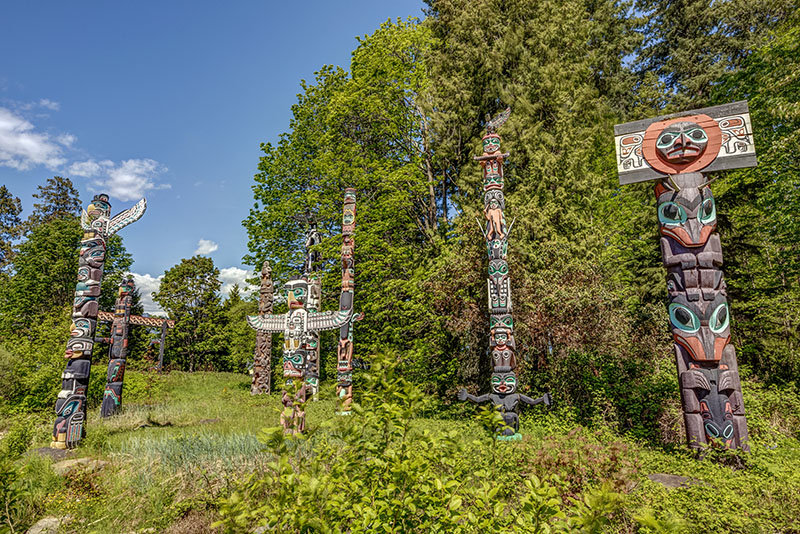
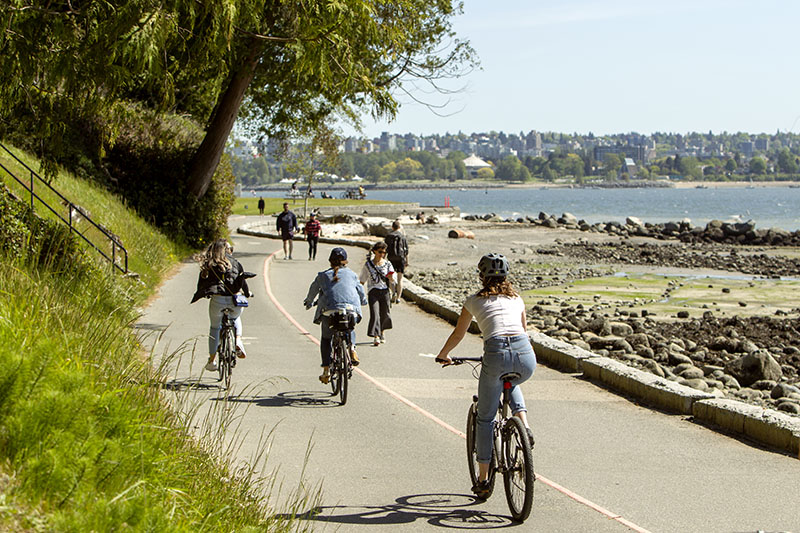
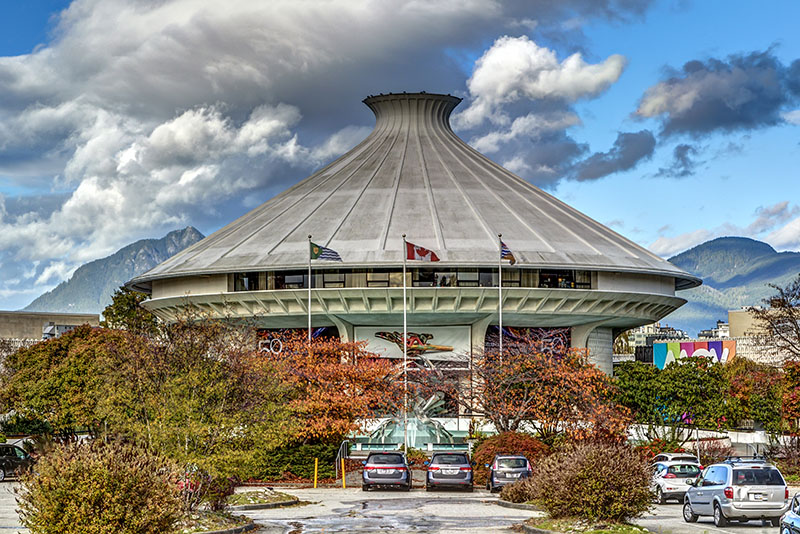
Stanley Park — which includes the Vancouver Aquarium, an outdoor swimming pool, the quaint Lost Lagoon, an outdoor concert venue, and even a cricket pitch — is a great place to get away from it all for a walk, jog, rollerblade or bike ride. If you’re cycling during COVID times, one lane of Pipeline Road inside the park has been set aside for bikes. As well, if you cycle past Second Beach and its swimming pool, the dedicated bike path continues southwest along English Bay and makes its way around busy False Creek.
Stanley Park is undoubtedly the city’s best known, but it is certainly not the only great park to socially distance from the crowds, enjoy quiet times in nature and take in the abundant scenery in and around Vancouver.
In the heart of the city is Queen Elizabeth Park, best known for its formal, sunken gardens complete with waterfall, and the Bloedel Conservatory, a triodetic dome that houses a display of tropical and sub-tropical plants. Originally called Little Mountain Park because it sits on a high point with great views of the Vancouver skyline, the park’s name was changed in 1940 to commemorate a visit by Queen Elizabeth I (a.k.a. the “Queen Mom”). The sunken garden, which was built in the depression left by the decommissioning of two rock quarries, is a must-see for its vibrant colours and tranquillity.
On the south side of the entrance to False Creek, Vanier Park is home to the Museum of Vancouver and H.R. MacMillan Space Centre and Planetarium. It also contains two small lakes and is the setting for the popular Bard on the Beach Shakespeare festival. To the west is Kitsilano Beach Park; the name of the park and the surrounding neighbourhood is derived from Squamish Nation Chief “August Jack” Khatsahlano, who led his people at the village of Chaythoos in Stanley Park. The outdoor Kitsilano Pool is, at 137 metres, North America’s longest saltwater swimming pool. During COVID times, reservations are required at (vancouver.ca), and there is also limited drop-in availability.
Looking for some beach time, or perhaps a romp with your dog? Jericho Beach Park and Spanish Banks Beach are great places to stretch out, enjoy a picnic, and lounge in the sand, with great views of the Vancouver skyline, English Bay and the North Shore mountains. The dog off-leash area is at the west end of Spanish Banks — named by a British naval officer in 1859 to acknowledge that Spaniards had previously explored the area. Its First Nations name is “Poochka,” which means “back of the whale rising and falling.”
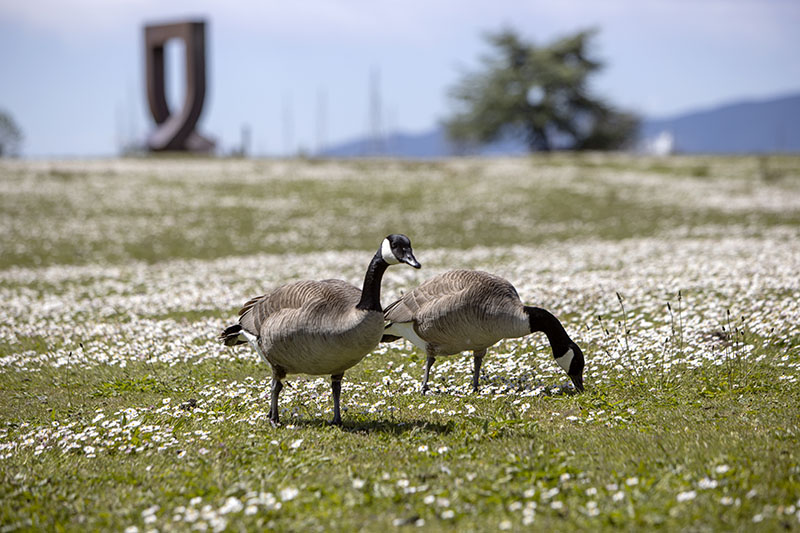
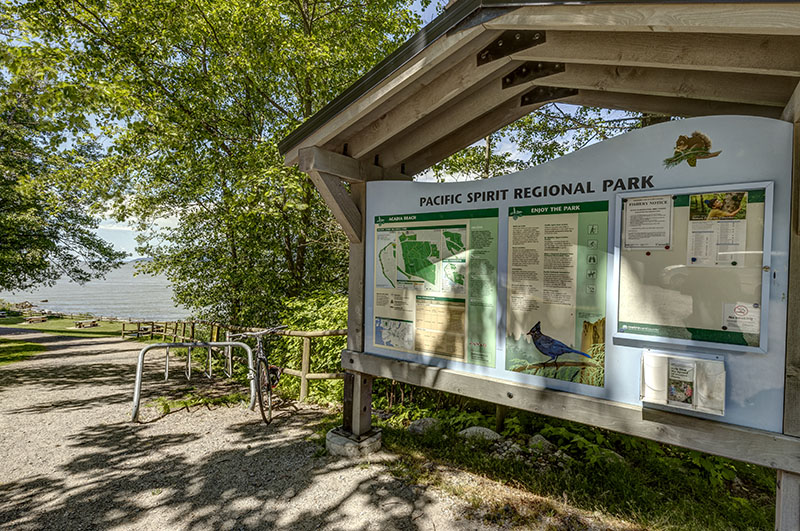
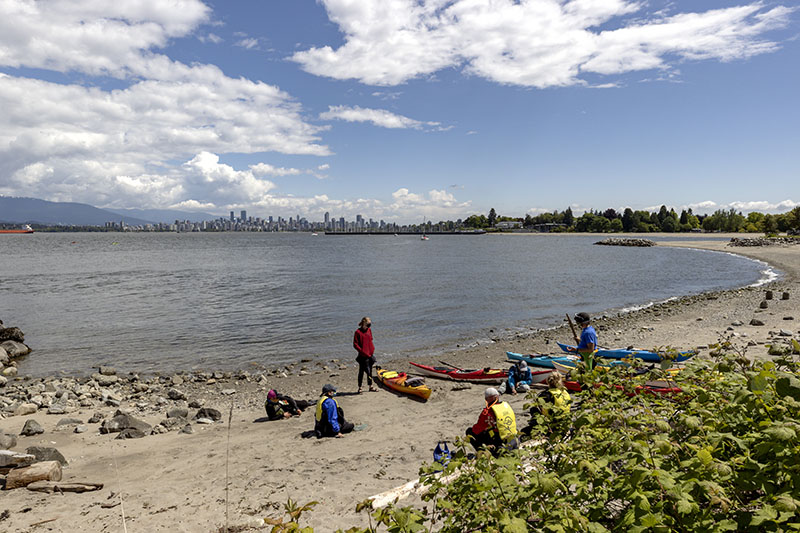
Pacific Spirit Regional Park, south of Spanish Banks, is located on the University Endowment Lands surrounding the University of British Columbia. The park, administered by the Greater Vancouver Regional District, comprises 874 hectares (2,160 acres) of mostly forested land and includes 73 km of walking/hiking trails, 50 km of which are also available to bikers and horseback riders. Most sections of the beach within the park (except Acadia Park), including the famed Wreck Beach, are designated as “clothing optional.” metrovancouver.org/services/parks
For more information on Vancouver parks, visit vancouver.ca. To find out more about other Vancouver attractions, visit tourismvancouver.com or phone
(604) 682-2222.

